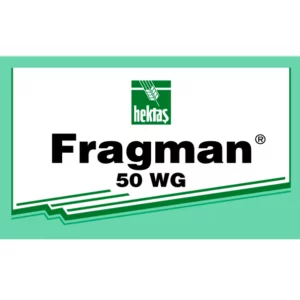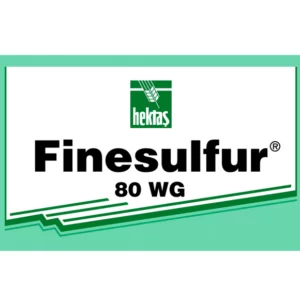FINESULFUR 80 WG should never be applied directly into any irrigation system. Winter spraying in fruits: Done using pressurized sprayers 20 days before the buds burst. Summer spraying in fruits: Done at 15-day intervals after all petals have fallen.
Vineyard Powdery Mildew:
1st spraying: When the shoots are 25-30 cm long before the flower,
2nd spraying: During the flower buds are separated before blooming,
3rd spraying: During the flower petals are fallen and the unripe graves are small shatter in size,
4th and other spraying: Depending on the impact duration of medicine used after the third sprayings, it is made until the period of veraison to shatters.
Vineyard mange: Since the product used against vineyard powdery mildew also brings this pest under control, no special spraying is required against vineyard leaf mange.
Apple Powdery Mildew:
1st Spraying: During pink flower bud,
2nd Spraying: During 60-70% shedding of flower petals,
3rd and other sprayings: Considering the duration of the medicine used as long as the favourable conditions for the disease persist, spraying is continued.
Peach Powdery Mildew:
1st spraying: It should be determined depending on the intensity of disease in the previous years. If the disease appears in the garden for the first time, spraying is started as soon as symptoms appear. If the disease has been observed before in the previous years, if disease shoot rate in trees are almost 1/3 in the inspections to be made after prunning, the first spraying should be made before the symptoms are observed.
2nd and other sprayings: The spraying is continued until the infection conditions disappear for the development of plant by considering the impact duration of preparation used.
Rose Powdery Mildew:
When the leaf and bud formation begins, the first spraying should be made. Spraying should be made in morning chill, windless and rainless weather and all surface of plant should be sprayed. Spraying can be repeated depending on the impact duration of the product used and course of disease.
Cucumber (greenhouse) – Powdery Mildew of Cucurbitaceae:
Spraying should be started once the first signs of disease are seen on plants and continued with at 12-14 day intervals. Powdery Mildew in Cucumber Gourd Family: When the first symptoms of disease are observed, spraying is started. Spraying should be continued by considering the severity of disease, climate conditions and duration of medicine. When the daily average temperature is above 27C and relative humidity is below 50%, spraying should be discontinued.
Onion mildew:
If it is necessary to start management with the fact that daily average temperature reaches 16° C and the proportional humidity reaches at least 80%, spraying can be started with the detection of the first signs of disease in the environment.
Bean rust:
Application should be started after the appearance of rust pustules on the leaves of bean plants in the environment and the administration should be continued by considering the severity of disease, climatic conditions and efficiency time of plant protection product. When disease is observed in ripening period of capsules in dried bean, it is not necessary for spraying since it does not lead to economic product losses.
Citrus red spider mite:
Spraying should be started before the pest passes to fresh shoots, that is, in the cycle before blooming. If this cycle is passed, spraying can be done one week after the fruit is bonded. Inside and outside of the trees, upper and lower surfaces of the leaves should be thoroughly sprayed. Spraying should not be done during the hottest hours of day and early hours of morning due to dew in the leaves.
Citrus bud mite:
In the gardens known as contaminated with pest, according to the climate conditions, when the shoots are 8-10 cm in spring, spraying is done in late March and early April, when the transition from old sources to new sources is greatest. Spraying is repeated 20-25 days after the first spraying.




نقد و بررسیها
حذف فیلترهاهیچ دیدگاهی برای این محصول نوشته نشده است.